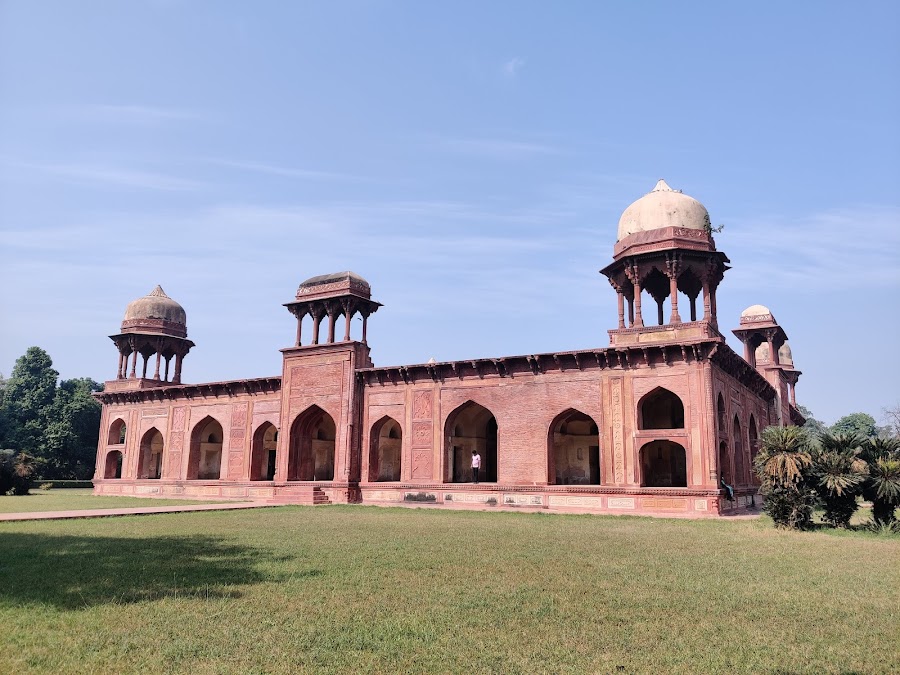
Tomb of Mariam-UZ-Zamani
Fatehpur Sikri, India
- Admire the fusion of Mughal and Rajput architecture.
- Explore the intricate carvings on the walls.
- Learn about Mariam-uz-Zamani's life and legacy.
- Take photographs of the beautiful monument.
Known for:
Description:
The Tomb of Mariam-uz-Zamani is a beautiful and historically significant monument located in Fatehpur Sikri. It's the final resting place of Mariam-uz-Zamani, also known as Jodha Bai, who was the Rajput wife of the Mughal Emperor Akbar. The tomb stands as a testament to Akbar's religious tolerance and the harmonious blend of Mughal and Rajput architectural styles. The structure is primarily built of red sandstone and features intricate carvings and embellishments. The canopy is supported by pillars with delicate carvings. The overall design reflects a unique fusion of Islamic and Hindu artistic traditions, making it a must-see for history buffs and architecture enthusiasts.
History:
Mariam-uz-Zamani, born a Rajput princess, played a significant role in Mughal history as the wife of Emperor Akbar and the mother of Emperor Jahangir. Her tomb was commissioned by her son, Jahangir, in 1623 AD. Before becoming a Mughal tomb, the building was a pleasure pavilion used by the royal ladies. The tomb's design incorporates elements from both Mughal and Hindu architectural styles, reflecting Mariam-uz-Zamani's cultural background and the religious harmony promoted during Akbar's reign. It's believed that the tomb was originally adorned with precious stones, which were later plundered. The tomb is a protected monument under the Archaeological Survey of India.